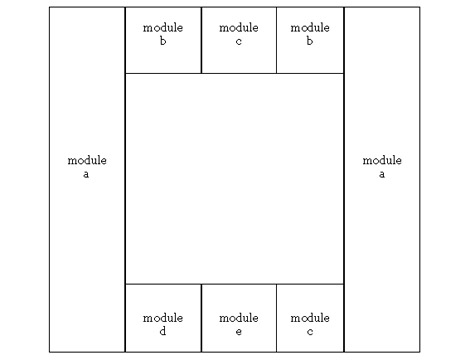Flemish Tapestry Panel
Audenarde, c. 1600
8’1” x 9’5”
Warp: wool, ivory to light brown, some mixing, natural, Z-Z-S 8-9 warps/in., a few areas up to 12/in.
Weft: wool, Z-1, Z-Z-S, 28-30 pattern shouts/in;
Woven sideways, left to right, on a horizontal loom as finer pieces were done vertical looms.
Generally in good condition with colors well preserved; small areas of reweaving or re-wefting; plain outer salvage trimmed with loss of town and weaver’s marks. Some brown outlines improved.
Depicts:
King David (to right) gives Uriah the Hittite (on left) a secret order to be conveyed to the commending general ??????. This order places Uriah in the frost line of battle, thereby assuring his demise. Uriah is the husband of Bathsheba whom David covertly covets and who will marry him after Uriah is killed. David’s penitence will eventually follow.
Probably from a Life of David series or perhaps from a series of old Testament scenes. There seem to be no other panels from this cycle recorded in the literature.
Attribution: The attribution to the provincial weaving town of Audenarde is loused or close similarities to pieces possessing the town & weavers’ marks in the outer plain border. Diagnostic are the following stylized background elements:
- The “building block” castle;
- The round, puffy “cotton ball” trees in rows blanketing the landscape.
- Pointy, sharply outlined distant mountains.
In comparison we may consider:
- H. Gőbel, Tapestries of The Lowlands, no. 357, a landscape with similar, but better, mountains and trees.
- Christie’s, London, Mayorcas Sale, 12.2.99, lot 316, Game Park 9’5” x 14’6”, 16c (late) with similar pointy mountains, cotton ball trees, identical trees, and similar foreground foliage elements. All wool, no silk. Probably from the same workshop as our example, but lacking identifying marks. Sold for ₤40,000 = $64,800
- The same pointy mountains with cotton ball trees appear in a panel from a different Life of David set depicting the Death of Absalom, 3.27 x 5.25m, end of the 16c., Beaune, Musee des Hospices. Pub in Dhondt, no. 9.
The curly hair and beards arc virtually identical to our example which is from a somewhat less distinguished series, however.
Interestingly, de Meuter in her magisterial surrey of Audenarde weaving does not focus on any Life of David series. Could our example be from a later edition of the same cartoon as the Beaune examples, albeit with different borders? The Beaune piece has a town mark, but lacks that of the weaver.
- The same mountains and trees recur in tapestry of Jason & Medea with Golden Fleece, c 1580-1600, 3.04m x 4.24 from the Abbey of Kremsműnster (de Meuter, p. 177)
- The same larger trees, mountains, etc. again appear in a Game Park panel, 1580-1600, with an unidentified weaver’s mark from the Audenardo Galerie d’Art M. Ragge-De Baere (de Meauter, p. 178) The floral border with round cartouches centering each side is no identical to recent published examples, but there are the same useful parallels.
- Similar elliptical/round cartouches in border centers appear on a Game Park examples, c.1580 – 1600 (de Meuter, p-143). The trees and mountains are also in the usual formula. The weaver’s mark, again & alas, is not identified. The border on our example was constructed from
- The left and right borders (left woven first) are identical in content and direction’s
- The top border is an axial reflection across the centre;
- The lower border uses the same cartoon as the upper with similar axial reflection, but in addition.
- The pumpkin still life is inverted from right to left;
- The central roundels with castles are unchanged in both end borders.
These simple manipulations of a few basic modules allow the weaver to produce variety without the expanse of additional cartoon. This is characteristic of production for the middle class in a provincial production centre.
Diagrammatically we see
The castles in the roundels are top/bottom and right/left identical, and are generic buildings with no reference to particular estates.
- Gőbel, no. 448 has side borders repeated in the same direction and has roundels in the centers of all 4 sides. He dates it c.1640 but clearly it seems earlier, c.1610
- A Brussels panel, early 17c. 8’8” x 11’4” with an unidentified Biblical scene was sold Sotheby’s N.Y., 23.5.03, lot 81, est. $10 – 15,000. It was of slightly finer execution and equally preserved color. (see p. for more comperanda).
Weaving in Audenarde is comprehensively covered in two recent exhibitions catalogues:
L. DeMeuter, M. Vanwelder, etc. al Tapesseries d’Audenarde du XVI au XVII Siecles, Tiele, 1999
L. Dhondt and F. Van Ommeslaeghe, Audenarde: Tapisseries Flamandes du XVI au XVIII Siecles, Arras, 1994
The illustrations only partly overlap and neither includes additional members of the series of our piece, thus it seems to be unknown to the specialist literature.
- Of roughly the same quality and period, but slightly larger is a hunting tapestry from Audenarde, end 16c. 8’9” x 11’2”, sold Sotheby’s, N.Y., 13.1.95 lot 78, est. $20-25,000
- A Biblical panel, c.1600 probably from nearby Enghien, 10’6” x 12’9” was sold Sotheby’s, N.Y. 6.6.94, lot 168, est. $20-25,000


